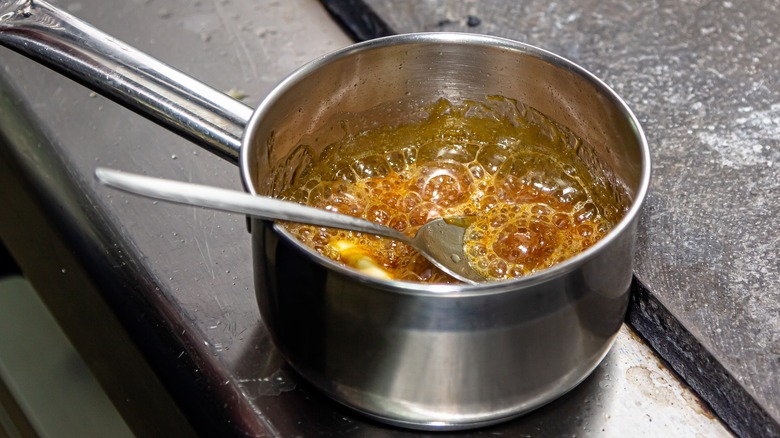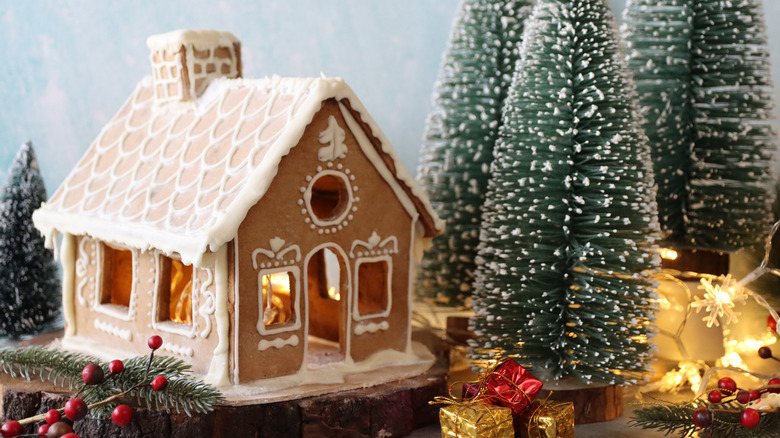The Sugary Hack For A Gingerbread House That Won't Fall Apart
Gingerbread houses are whimsical holiday decorations gracing the table as little miracles of baking and engineering; it's a shame most of them don't get eaten. You can make them yourself, cutting templates and delicately trimming slabs of gingerbread to fit, painstakingly decorating it. If that's not your thing, there are plenty of kits available at the grocery store during the holiday season if you want to assemble one yourself. But no matter which option you choose, any gingerbread house rises (or falls) based on the strength of the glue that holds the pieces together.
Getting a gingerbread house to stand on its own is a point of frustration for home bakers assembling their own creations. The icing that comes with kits isn't usually up to snuff; you don't want your gingerbread house collapsing in the middle of the festivities. If you want the sturdiest gingerbread house to stand up under its own strength, swap out the store bought packet of icing for strong, durable caramel. Not only is it incredibly easy, but the difference should be noticeable enough that you may never look back.
Melted sugar is your best bet for a fortified gingerbread house
Melted sugar is the ideal glue for your gingerbread house because it hardens quickly and holds fast — far better than the royal icing packets that come with the kits. Think back to the sugar glass science projects from elementary school and you'll get the idea. All you need to do is slowly and gently melt some sugar in a sauté pan, perhaps with some water to speed things along. Then, channel your inner "The Great British Baking Show" contestant during Biscuit Week and assemble your house. You'll need to keep the sugary mixture warm while you work, though, so set pan on low and keep an eye on it. Work carefully and rather quickly, as the melted sugar can cause quite severe burns (according to a study from the International Society for Burn Injuries), and it hardens fast.
Of course, you can also use royal icing as additional glue to provide structure to your gingerbread house. But like any sort of sugar work, it's a bit finicky. Its sticking power depends on the mixture — overmixing, undermixing, and even the room's humidity can affect if it hardens or not. The icing needs to be a thicker consistency than what you would use to decorate with. Otherwise, it can crack and crumble.
Gingerbread house construction starts with good gingerbread
Now that you have your glue figured out, it's time to turn your attention to the gingerbread itself. You'll want a gingerbread house recipe that is sturdy but still flavorful. Most recipes for gingerbread house construction won't include any leavening agents or anything that can cause steam, such as eggs, so the bread won't rise or be puffy. Before baking, roll out the dough and make sure your template fits. Here, you can score the dough so it bakes with the lines, then after baking, you can trim it to size. Using a good, sharp knife will ensure neat, crisp edges that will fit together.
It's easier to decorate the panels before you assemble them, and the royal icing should be thin. Let it harden, then assemble. If nothing works to stick the panels together, hot glue can be used as a last resort, but only if you don't plan on eating your creation. You can cover the hot glue with royal icing after the fact.


